
Pakistan is home to a diverse range of flowering trees that enhance the landscape with their vibrant colors and provide numerous environmental and economic benefits. These trees not only beautify urban and rural areas but also offer shade, attract pollinators, and contribute to air purification. In this blog, we will explore some of the most common and remarkable flowering trees found in Pakistan.
Table of Contents
ToggleTop Flowering Trees in Pakistan
Amaltas (Cassia fistula)
Also known as the Golden Shower Tree, Amaltas is one of the most striking flowering trees in Pakistan, particularly admired for its cascading yellow flowers.
- Blooming Season: Spring and early summer.
- Habitat: Thrives in tropical and subtropical regions.
- Uses: Medicinal applications, ornamental planting, and shade.
- Significance: Often planted along roadsides and in parks for its stunning floral display.
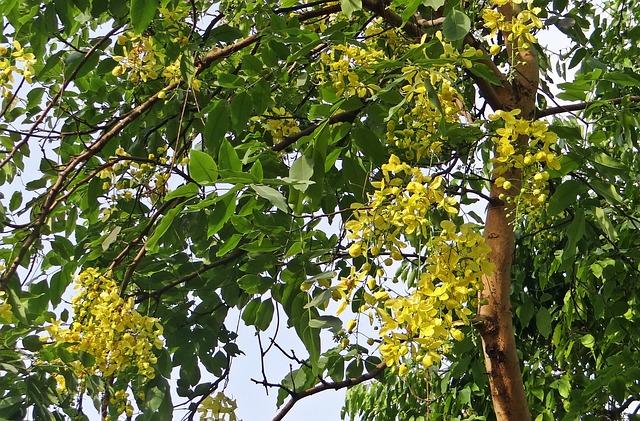
Bauhinia Blakeana (Hong Kong Orchid Tree)
This tree produces beautiful deep pink to purple flowers and is an excellent addition to gardens and landscapes.
- Blooming Season: Late fall to early spring.
- Habitat: Prefers warm climates and well-drained soil.
- Uses: Ornamental planting, landscaping, and urban decoration.
- Significance: Its flowers resemble orchids and attract pollinators.

Bottlebrush (Callistemon spp.)
Recognized for its unique red, cylindrical flowers that resemble a bottle brush, this tree is a favorite among garden enthusiasts.
- Blooming Season: Spring and summer.
- Habitat: Drought-tolerant and thrives in sandy soil.
- Uses: Hedge planting, ornamental value, and attracting pollinators.
- Significance: Provides nectar for bees and birds.

Cassia Javanica (Pink Shower Tree)
This lesser-known flowering tree is admired for its pink blossoms that cover the tree in a breathtaking display.
- Blooming Season: Spring and early summer.
- Habitat: Thrives in warm, sunny conditions.
- Uses: Ornamental planting and urban beautification.
- Significance: Adds diversity to urban landscapes.

Champak (Magnolia champaca)
Champak, or the Joy Perfume Tree, is known for its intensely fragrant yellow-orange flowers.
- Blooming Season: Summer and monsoon.
- Habitat: Prefers humid, tropical environments.
- Uses: Perfume production, shade, and religious offerings.
- Significance: Its flowers are widely used in traditional perfumery.
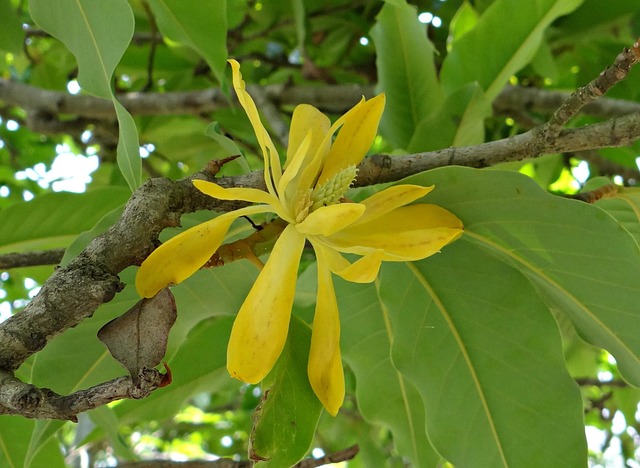
Frangipani (Plumeria spp.)
Frangipani, with its delicate, fragrant flowers in white, yellow, and pink, is commonly planted in gardens and along streets.
- Blooming Season: Spring to autumn.
- Habitat: Thrives in warm, dry climates.
- Uses: Landscaping, religious ceremonies, and perfume production.
- Significance: Associated with peace and tranquility.

Glory Tree (Tibouchina urvilleana)
This tree produces stunning purple flowers that create a striking visual impact.
- Blooming Season: Summer to early winter.
- Habitat: Prefers tropical and subtropical climates.
- Uses: Ornamental planting, urban beautification.
- Significance: Enhances the aesthetic value of gardens and streets.

Gulmohar (Delonix regia)
Gulmohar, also called the Flame Tree, is celebrated for its fiery red and orange blossoms, which create a mesmerizing sight during the flowering season.
- Blooming Season: Late spring to early summer.
- Habitat: Prefers warm, dry climates with well-drained soil.
- Uses: Urban beautification, shade, and erosion control.
- Significance: A popular choice for avenues and gardens due to its vibrant colors.
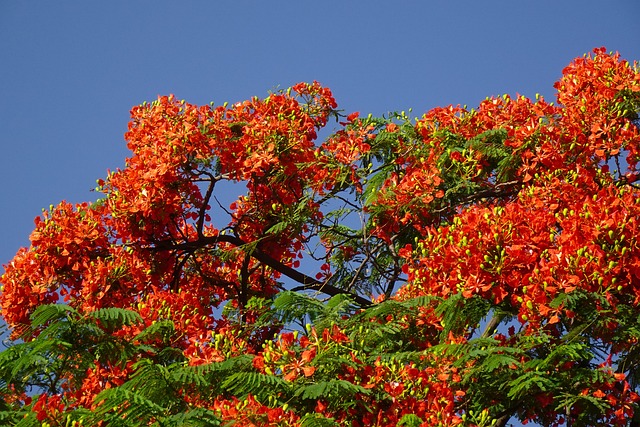
Jacaranda (Jacaranda mimosifolia)
This exotic tree, known for its stunning purple-blue flowers, adds a splash of color to the landscape.
- Blooming Season: Spring and summer.
- Habitat: Best suited for warm, sunny climates.
- Uses: Shade, ornamental planting, and urban greening.
- Significance: Provides aesthetic value and attracts pollinators like bees and butterflies.

Kachnar (Bauhinia variegata)
Kachnar, or the Orchid Tree, produces delicate pink, purple, or white flowers that resemble orchids.
- Blooming Season: Spring and early summer.
- Habitat: Prefers well-drained soils and moderate climates.
- Uses: Ornamental planting, edible flower buds, and medicinal purposes.
- Significance: Its flowers and buds are used in traditional Pakistani cuisine.
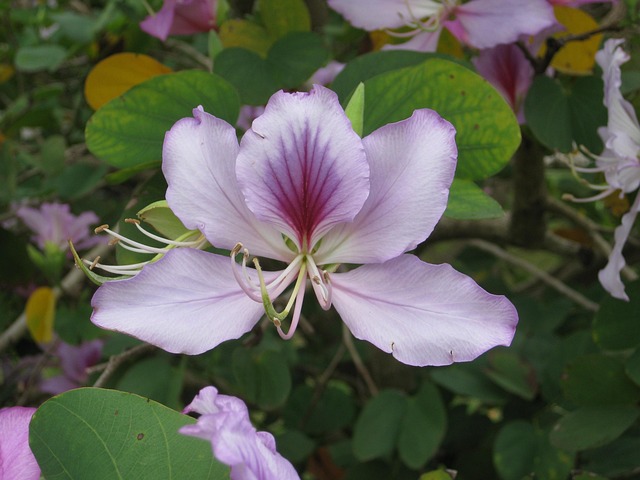
Magnolia (Magnolia grandiflora)
This evergreen tree is known for its large, fragrant white flowers and glossy green leaves.
- Blooming Season: Spring and summer.
- Habitat: Prefers well-drained, slightly acidic soil.
- Uses: Garden decoration, shade, and air purification.
- Significance: Symbolizes purity and dignity.

Queen’s Crape Myrtle (Lagerstroemia speciosa)
This tree is famous for its striking pink, purple, or lavender flowers.
- Blooming Season: Summer and early autumn.
- Habitat: Prefers warm, sunny locations.
- Uses: Ornamental planting, city beautification.
- Significance: Enhances landscapes with its long-lasting blooms.

Silk Cotton Tree (Bombax ceiba)
Also known as the Red Cotton Tree, this majestic species is famous for its large, bright red flowers.
- Blooming Season: Late winter to early summer.
- Habitat: Grows well in both tropical and subtropical regions.
- Uses: Timber, ornamental purposes, and medicinal applications.
- Significance: Its flowers are a vital source of nectar for birds and insects.

Tabebuia (Tabebuia rosea)
Also known as the Pink Trumpet Tree, Tabebuia is admired for its stunning pink blossoms.
- Blooming Season: Late winter to early spring.
- Habitat: Prefers full sunlight and well-drained soil.
- Uses: Ornamental landscaping and urban beautification.
- Significance: Enhances the beauty of city streets and gardens.
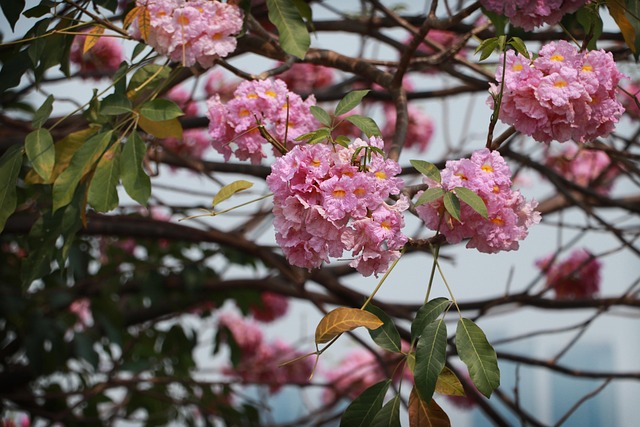
Flowering trees play a vital role in enhancing the beauty and biodiversity of Pakistan. They provide shade, attract wildlife, and contribute to the overall well-being of the environment. Whether in urban landscapes, gardens, or forests, these trees continue to enrich our surroundings with their colors and fragrances. Planting and preserving these trees will ensure a greener and more beautiful Pakistan for future generations.
